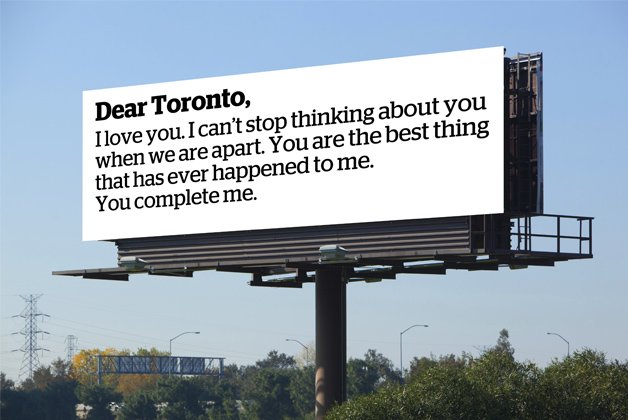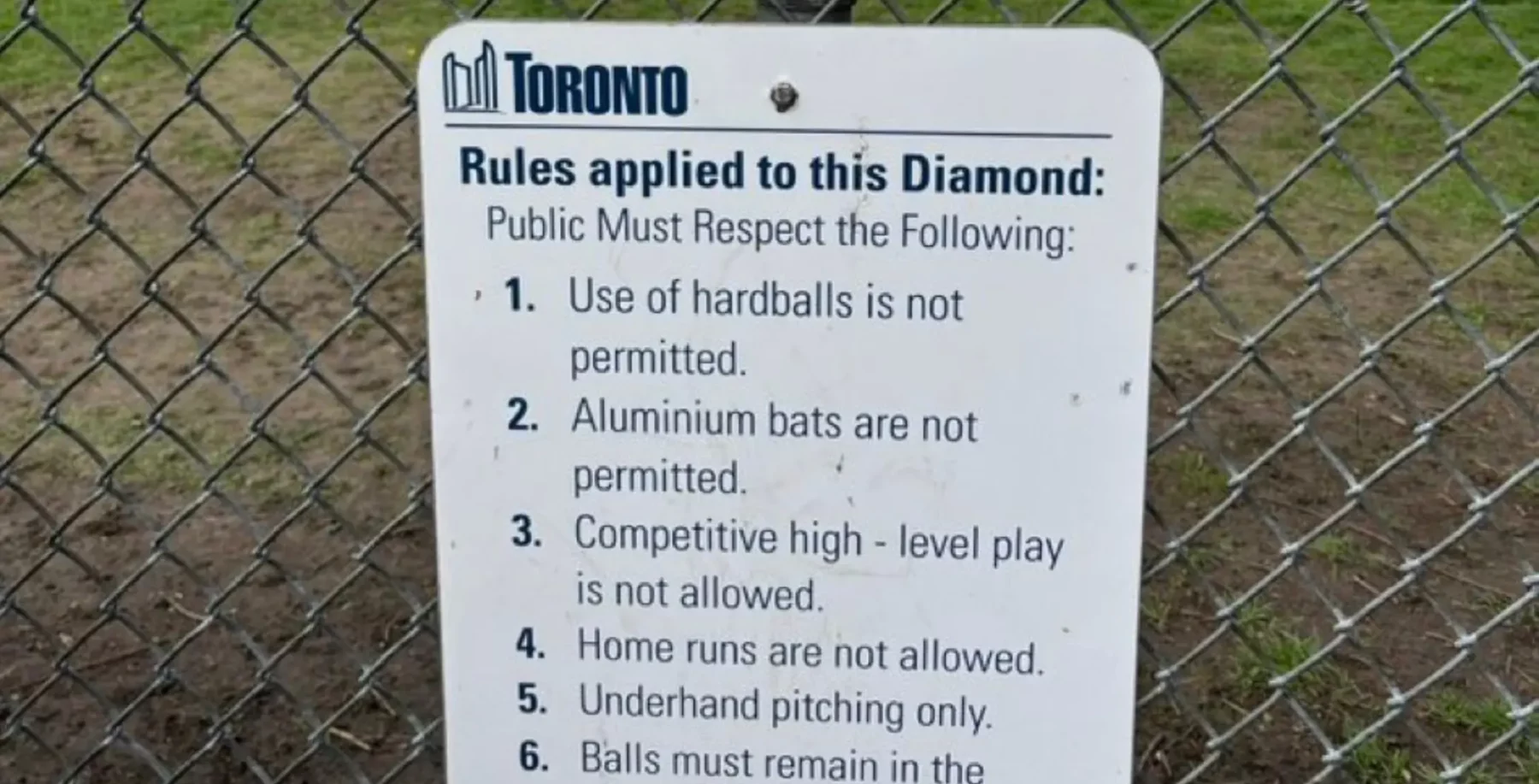
When it was announced last week, Dear City – a billboard campaign giving locals 140 characters to write a love message to T.O. – was met with lots of cognitive dissonance.
The project comes courtesy of a somewhat startling partnership between public space guardian Spacing and Pattison Outdoor Advertising. (It was Spacing, foe of corporate intrusions into the public realm, that helped lead the successful billboard tax campaign.)
The idea that Spacing has cozied up to Pattison, of all organizations – Canada’s largest, most obnoxiously visible ad company – no doubt has some cocking an eyebrow. All the more so since some of these messages will be digital, allowing the industry to familiarize folks with an electronic signage onslaught.
“We’re not trying to abandon our principles around illegal billboards,” says Matthew Blackett, Spacing’s publisher and co-founder. “We’re actually taking away ad space in many ways and putting up culture.”
Blackett suggests the initiative is a form of culture jamming, using video billboards for the public good rather than letting them be completely saturated with advertising.
The idea is pretty innocuous, all things considered: tweet a “love letter” to your city and, if selected, it and others will run on digital billboards across Canada, a national “public art project” running for two weeks in June.
“Join other urbanists in a public dialogue about the issues affecting our daily lives in the cities we inhabit,” says the Spacing statement online..
The language reflects the grassroots principles that are Spacing’s brand. But rhetoric aside, what makes something public art? And are billboard projects a tacit endorsement of the advertising medium?
To artist, photographer and long-time activist with the BeautifulCity.ca Alliance Che Kothari, a front-liner on the billboard-tax fight, the project’s success or failure hinges on one thing: representation.
“I think [it] has great potential,” Kothari tells NOW. Speaking as a public space activist, the young crusader is hopeful about the idea, however conflicted he might feel.
“To think that traditional advertising spaces can be occupied by public voices is a great thing,” he says. “I am a firm believer that public space should include the public voice.”
But there are plenty of caveats. Can billboards – distracting, ostentatious objects that do little but encourage consumerism – serve as vehicles for street art and civic discussion?
Can traditional advertising spaces and public voices coexist, as Kothari suggests? Or are we talking about an awkward bedfellowship that will only further expand those advertising spaces?
“Spacing Magazine’s track record is pretty good in terms of their understanding of community issues,” Kothari acknowledges, “so if they’re on board, there’s obviously integrity with it.”
That said, he’s concerned about the criteria for rejection and how the “love letters” will be judged.
The call for submissions explains in plain language: “We can’t include letters that violate the Canadian Human Rights Act,” Spacing says, or “are libelous or slanderous, give out personal information or include profanity.” In other words, don’t smear anyone or throw oppressive language around like confetti and things will be fine.
But what about critical messages, Kothari asks? “Comments that are challenging the status quo or the billboard industry or the companies – will those get shivved?”
Blackett dismisses the suggestion that some shadowy cabal will sanitize the dialogue. “We’re happy to have more critical [love letters] up there,” he says. And if there’s any backroom confabulation between Spacing and Pattison, it will centre on which billboards to use, he says. It won’t decide the content of the messages.
For example, love letters will not be seen on billboards along the Gardiner, where they might be a potentially dangerous distraction for drivers. Further, he says, when Pattison suggests billboards to use, Spacing will consult “public space advocates to make sure none of them are illegal.”
Nevertheless, many of those same public space advocates seem unconvinced.
“Yeah, I know about it,” says Rami Tabello, a key activist in the fight against illegal billboards. “I’m not sure I have any real thoughts about [it]. A little disappointed in Spacing itself, but it’s their call.”
news@nowtoronto.com












